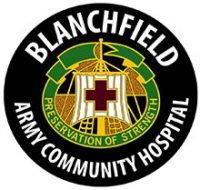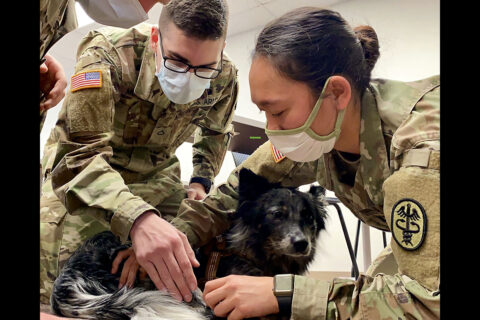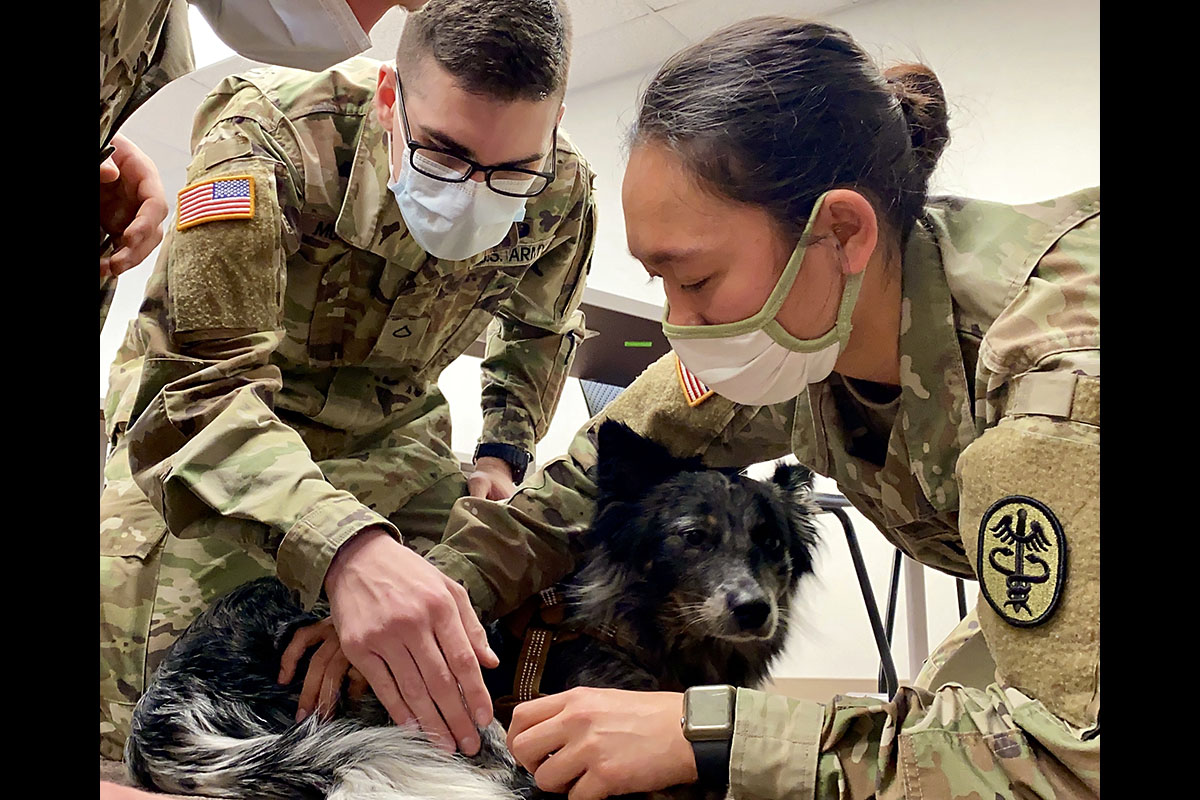Blanchfield Army Community Hospital Public Affairs
 Fort Campbell, KY – Soldiers from Blanchfield Army Community Hospital (BACH) recently participated in K9 Tactical Combat Casualty Care to enhance their ability to provide point of injury care to military working dogs in a deployed environment.
Fort Campbell, KY – Soldiers from Blanchfield Army Community Hospital (BACH) recently participated in K9 Tactical Combat Casualty Care to enhance their ability to provide point of injury care to military working dogs in a deployed environment.
“Our 68Ws (combat medical specialists) are on the front lines and so are our military working dogs, and often we are not. So when those military working dogs are hurt in the line of fire, the first person to see them and get hands on them are our medics. So it’s important for the [medics] to know when they have this injured military working dog, what they can do and how they can save this dog’s life.” said Capt. Michael Hoffman, an Army veterinarian assigned to the Fort Campbell Veterinary Center, one of six veterinary staff who conducted the training.

K9TCCC is evidence-based guidelines that establish a standard of care from point-of-injury on the battlefield back to Role 2 facilities for military working dogs across all services based on a combination of analysis of combat casualty data, clinical research, and combat lessons learned.
This training for non-veterinary providers (handlers and deploying medical personnel) focuses on preserving life, limb or eyesight, and is also part of the Individual Critical Task List for Army emergency room nurses.
“We’re not always with the dogs when they deploy so it is good to have other medical teams that have a really good basis of knowledge there that can also provide treatment for our dogs,” said Pfc. Haylee Valdez, an Army animal care specialist at Fort Campbell.
Veterinarians and animal care specialists do deploy, but the military working dogs they support may be spread out with their handlers to more austere locations within a large area of operations.
Valdez taught participants how to conduct a patient assessment on a military working dog, explaining what signs to look for, where to look and what to do.
The vet team shared the mnemonic M2ARCH2E to help Soldiers remember the steps to follow when treating a military working dog:
Muzzle – An injured and conscious military working dog may bite so make sure to muzzle the dog first.
Massive hemorrhage – Just like humans, it is critical to stop massive bleeding. Unlike humans, tourniquets are usually not effective on dogs.
Airway – Recognize the need for providing an airway.
Respiration – Just like humans, seal open chest wounds, perform needle decompression. Unlike humans, it is best not to bury the needle to the hub.
Circulation – Know where to measure, and dog-specific heart rates.
Hypothermia – Just like humans, keep patient covered and dry.
Head trauma – How can head trauma be minimized?
Everything else – Drug doses are different, signs of heat stroke.
“Today we learned about basic bleeding controls and injuries that we could possibly see on the dogs and how to treat those,” said training participant Sgt. 1st Class Jamie Hendzel, a combat medic specialist at BACH. Hendzel noted some similarities that she would encounter when treating a human, like bleeding control, and some differences unique to dogs.
“The head to toe assessment was mostly the same – the basic things we’re going to see on the initial point of injury — but on the dog, the locations are different. The pulse is found in a different location, the heart beats per minute is different. You never know what type of patient you are going to see downrange, so it’s good to have basic knowledge.”
Col. Michael Wissemann, 531st Hospital Center deputy commander for nursing, and members from his unit also participated in the training. Wissemann shared that during a previous deployment a military working dog was brought to his unit for care.
“The dog had a problem with his intestines and it was sent to our unit in Iraq,” said Wissemann, “We had a vet there who could treat the dog, but it goes to show that military working dogs down range may need emergency medical care. This training is great for young Soldiers who may not have had exposure to military working dogs before. It’s great for nurses and docs to refresh knowledge they already have and to revalidate it because things do change over time.”



